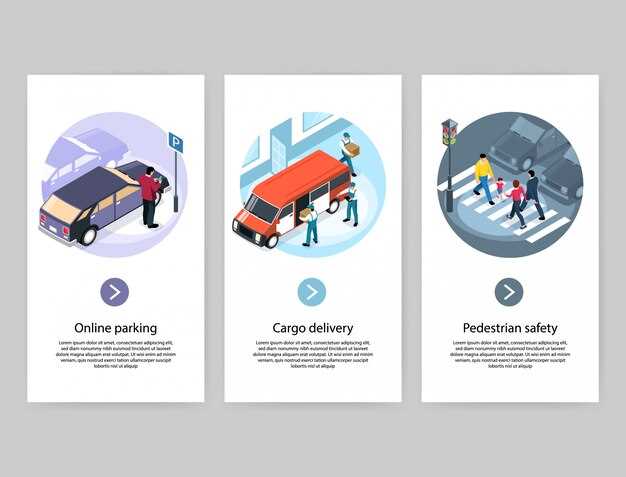
Toyota has consistently prioritized safety in its vehicles, and the introduction of the Toyota Safety Sense (TSS) package is a testament to this commitment. This suite of advanced safety features is designed to enhance driver awareness and assist in prevention of potential accidents. By integrating cutting-edge technology, TSS aims to provide drivers with peace of mind on every journey.
Central to the Toyota Safety Sense package is its emphasis on crash avoidance. With features like Pre-Collision System, Lane Departure Alert, and Adaptive Cruise Control, TSS works actively to mitigate risks associated with driving. Each component is engineered to detect and react to external conditions, thereby reducing the likelihood of a collision and enhancing overall safety on the road.
Understanding the benefits of these features is crucial for any driver looking to improve their situational awareness and sense of safety while behind the wheel. By adopting Toyota’s innovative safety measures, drivers can navigate the complexities of the road with greater confidence, knowing that they are supported by state-of-the-art technology designed specifically for crash prevention.
Understanding Pre-Collision System and Its Role in Crash Prevention

The Pre-Collision System (PCS) is a vital component of Toyota’s Safety Sense suite, designed to enhance safety and facilitate crash prevention. This advanced system employs a combination of cameras and radar sensors to detect potential obstacles on the road, including vehicles and pedestrians, allowing for timely intervention.
When the PCS identifies a possible collision, it provides auditory and visual warnings to the driver, urging them to take immediate action. If the driver fails to respond, the system can automatically engage emergency brakes to mitigate the impact or, if necessary, prevent a collision altogether.
Moreover, the effectiveness of the Pre-Collision System extends beyond mere warning mechanisms. By analyzing the speed and distance of surrounding obstacles, the PCS adjusts the braking force as required, ensuring optimal safety in various driving conditions. This level of proactive intervention not only protects the driver and passengers but also contributes to overall road safety, reducing the likelihood of accidents.
In conclusion, Toyota’s Pre-Collision System embodies a significant advancement in vehicle technology, prioritizing safety and prevention. Its intuitive functionality exemplifies Toyota’s commitment to creating safer driving environments, making it an essential feature for modern vehicles.
How Lane Departure Alert Enhances Driver Awareness and Safety

The Lane Departure Alert (LDA) system is a crucial feature within the Toyota Safety Sense suite, designed specifically to improve driver awareness and overall safety on the road. By actively monitoring the vehicle’s position within the lane markings, the LDA serves as an essential tool for prevention of unintended lane departures.
Utilizing advanced sensors and cameras, the system can detect when a vehicle drifts unintentionally out of its designated lane without the use of turn signals. This immediate recognition plays a vital role in enhancing the safety of both the driver and other road users. When a potential lane departure is detected, the LDA system issues an alert through audible warnings or visual signals, prompting drivers to regain their focus and correct their course.
Furthermore, the LDA function reinforces the driver’s sense of awareness by acting as a safety net during long drives or hectic traffic conditions. It serves as a reminder of the importance of staying within lane boundaries, thereby significantly decreasing the likelihood of a crash due to driver distraction or fatigue. By ensuring that drivers remain engaged, the LDA contributes to a more attentive driving experience.
In summary, the Lane Departure Alert system effectively enhances driver awareness and safety by providing timely alerts, helping in the prevention of unintended lane departures, and promoting a conscious approach to driving. The integration of this technology represents a significant step toward reducing road accidents and ensuring a safer driving environment for everyone.
Adaptive Cruise Control: Balancing Convenience and Protection on the Road
Adaptive Cruise Control (ACC) is a standout feature within the Toyota Safety Sense suite, designed to enhance both convenience and safety for drivers. This innovative technology automatically adjusts the vehicle’s speed to maintain a safe following distance from the vehicle ahead, significantly reducing the risk of rear-end collisions.
One of the core advantages of ACC is its ability to provide prevention against potential crashes. By constantly monitoring the speed and distance of surrounding vehicles, it reacts promptly to changes in traffic conditions. If the vehicle in front slows down, the system automatically reduces your speed to avoid any abrupt stops.
In addition to offering peace of mind, ACC enhances the overall driving experience. It allows drivers to maintain a steady speed during long highway journeys, alleviating fatigue and making road trips more enjoyable. This balance of convenience and safety reinforces Toyota’s commitment to ensuring a secure environment for all road users.
Ultimately, the integration of Adaptive Cruise Control within the Toyota lineup exemplifies the brand’s dedication to sense and responsiveness on the road. By utilizing advanced sensors and algorithms, Toyota not only aims to provide an unparalleled driving experience but also to prioritize the well-being of its drivers and passengers. With ACC, the road becomes a safer place, seamlessly merging the benefits of modern technology with fundamental road safety principles.
